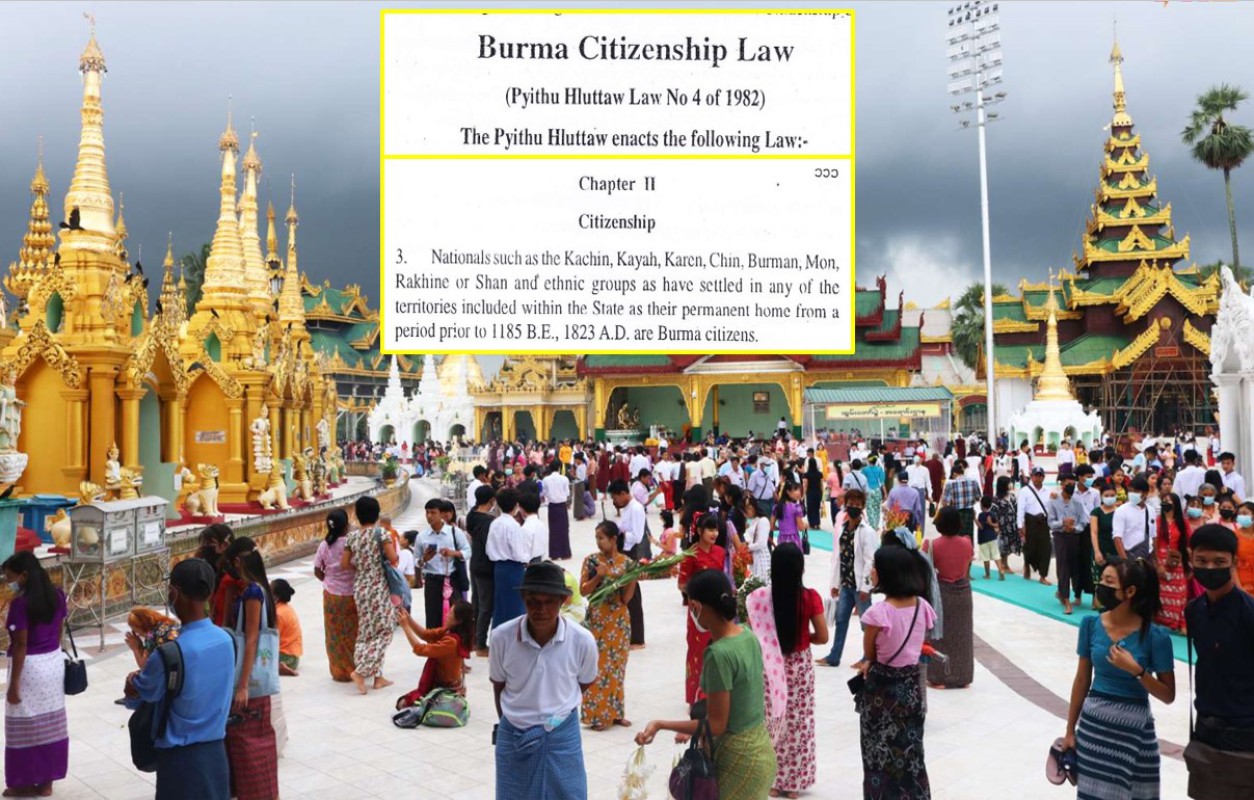1982 Citizenship Law – A stronghold for the nation

823

Tun MT (NP News) - Aug 9
The 1982 Citizenship Law of Myanmar lately becomes subjected to be criticized by the international community that the law is unfair, or unjust, or even does not guarantee the right to citizenship.
However, most Myanmar nationals disagree with that critic. In fact, Myanmar people believe that the 1982 Citizenship Law is a stronghold to defend the State, national security and the sovereignty.
Let’s find out what the law actually says and how the law was developed, who are eligible to get citizenship and what kind of external factors should the country consider in protecting their sovereignty.
The 1982 Law was drafted by the jurists who’ve got at least two legal degrees or the doctorate holders from both civilian scholars and the military scholars and other think-tanks. It took six years of drawing this law in which versatile opinions were received from the public three-times when drawing the law.
Therefore, if anyone or any organization says they will annul this law to achieve a fovour of political game or the political profit by favouring a group of community, it is a lie. This means no one can annul this law without a public consensus.
The 1982 Citizenship Law has eight chapters with 76 legal sections.
There are differences and conditions between ‘National’ and ‘Citizen’ in all over the world. Those who immigrated and lived in a country for a certain period of time with no violation nor breaching the laws of the host country, then the person may have the right to naturalize the citizenship. Still, he/she must obey and abide by the Constitutional provisos and the host country’s existing laws.
In Myanmar, 135 ethnics and tribes that are officially stated by the country are the Myanmar nationals. Therefore, Section 3 of the 1982 Citizenship Law says, “Nationals such as the Kachin, Kayah, Karen, Chin, Burma, Mon, Rakhine or Shan and ethnic groups as have settled in any of the territories included within the State as their permanent home from a period anterior to 1185 B.E., 1823 A.D. are Burma citizens.”
Section 5 says, “Every national and every person born of parents, both of whom are nationals are citizens by birth.”
The law categorizes three citizenship statuses known as citizen, associate citizen and naturalized citizen.
According to Section 7 (d), (e), (f) of the law, a person who is born of the parents, who of whom is the third generation of any of the associate citizen or the naturalized citizen and one of whom shall be citizen or associate citizen or the naturalized citizen will be granted ‘Citizen’ status.
Although the law classifies three statuses of the citizenship, rights and responsibilities as a citizen of no matter citizen by birth or associate citizen or naturalized citizen are all same and equal for all three groups. No one is discriminated as per the Chapter VIII of the 2008 Constitution (Citizen, Fundamental Rights and Duties of the Citizens). The country guarantees all three statuses of citizens in job opportunity, right to education, or in aspect of religion and traditional activities or all things.
Therefore, some even say the law is too weak since there are many geopolitical challenges for the country in today era as Myanmar locates next to the massively population explosive country – ‘Bangladesh’.
Myanmar, located in the northern and eastern hemispheres with coordinates of 21.9162° N and 95.9560° E, territorially connects with India, Bangladesh, China, Laos, and Thailand.
The country hosts a 54.41m population as of 2022.
According to the 2014 National Census, the country’s population growth rate was 0.89% with 2.29% of birth rate. However, the population growth rate decreased to 0.7% as of 2020.
The country’s population growth rate is witnessed gradually decreasing as the figures say it was 2.02% in 1973-83, 1.41% in 1983-93, 1.38% in 1993-2003, and 0.89% in 2014 National Census.
Meanwhile, one of its neighbor countries is exploding in population into more than triple within six decades from 48m to more than 168m population. That figure hits more than three-times of Myanmar's population. The country with such a massively explosive population is known as Bangladesh.
Notwithstanding, when comparing the total land areas of the two countries, it can be seen Myanmar possesses 676,578 km² whereas does Bangladesh only 148,460 km². This means Myanmar has six-times wider land territory than that of the country which holds more than three-times larger population size (in current).
There is no doubt that such a larger population with an explosive birth rate with a much smaller land area is illegally entering the country for their survival.
There is a Myanmar proverb on this point for a long century. It says ‘Quicksand will not swallow culture and race, outsiders will swallow up the nation into extinction,’ shows the country’s indigenous people’s fear of mass and illegal immigration into the country, especially by people from the Western borders who are non-Buddhists.
From the tripoint with India in the north and to the Bay of Bengal in the south, Myanmar territorially connects with Bangladesh stretching 271 kilometers (168 .4 mi) in its west, Rakhine State.
Illegal entry of Bangladeshis is a huge threat to the country in long-term existence not just that it is a real intimidation for the country’s cultures and indigenous.
That is to say, most believe that the 1982 Citizenship Law is the stronghold in defending the country’s existence of indigenous, traditions and cultures.